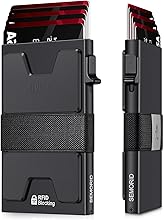
Naming streets and buildings with Indigenous languages an act of reconciliation: activists
CBC
You may have noticed more Indigenous languages appearing in the names of public buildings on streets in Saskatchewan.
Just last week, the Mitakuyé Owâs'ā Centre, a new recreation centre, opened in Regina's Heritage neighborhood. The name is a Dakota phrase that translates roughly to "all my relations."
It's part of a growing trend that community activist and artist Joely BigEagle-Kequahtooway says reflects the history of cities like Regina and Saskatoon as gathering areas for Indigenous people.
"By naming buildings, by acknowledging that history, that true history, that's really just highlighting the contributions our ancestors made to the well-being of our community," she said.
BigEagle-Kequahtooway was approached by the City of Regina in 2016 to discuss how the city could work on reconciliation.
While one of her major goals — to see Dewdney Avenue renamed to Buffalo Avenue — still remains, other names in Regina have shifted to reflect Indigenous language, history and culture. For example, a portion of Tower Road was renamed Anaquod Road in 2017 in honour of Glen Anaquod, a residential school survivor and knowledge keeper at the First Nation University of Canada.
Some Indigenous names may be hard for people who don't speak the language to pronounce at first, such as the Mâmawêyatitân Centre (pronounced ma-ma-waya-ta-tan), which opened in Regina in 2017. The name means 'let's all be together 'in the Cree language.
Earlier this year some people in Saskatoon expressed concerns about the renaming of John A. Macdonald Road to miyo-wâhkôhtowin Road, a name that translates to "good relationships" in Cree. One local rallied against that change, saying it was difficult to spell and pronounce.
Simon Bird, a PhD student in Indigenous language revitalization at the University of Victoria and a fluent Cree speaker who also teaches the language, said there are readily available resources people can use to learn more about a word or how to pronounce it, including language apps or talking directly to someone who speaks the languange.
"It's a part of this whole process of looking at signs right from your daily walk on your daily drive. It's this process of questioning," said Bird.
Bird has traveled around the province and shares Cree language on his Facebook page, Cree Simon Says, where he puts up lessons for all ages.
"Seeing the resurgence of language and building signage, traffic signs, is a very healthy sign that we are actively acknowledging that the Indigenous people of the land are still among us and we are actively supporting the efforts of language revitalization," said Bird.
BigEagle-Kequahtooway noted British Columbia committed $50 million in 2018 to help revitalize Indigenous languages.
The City of Vancouver also created videos to help people learn the pronunciation for renamed places.





















 Run 3 Space | Play Space Running Game
Run 3 Space | Play Space Running Game Traffic Jam 3D | Online Racing Game
Traffic Jam 3D | Online Racing Game Duck Hunt | Play Old Classic Game
Duck Hunt | Play Old Classic Game